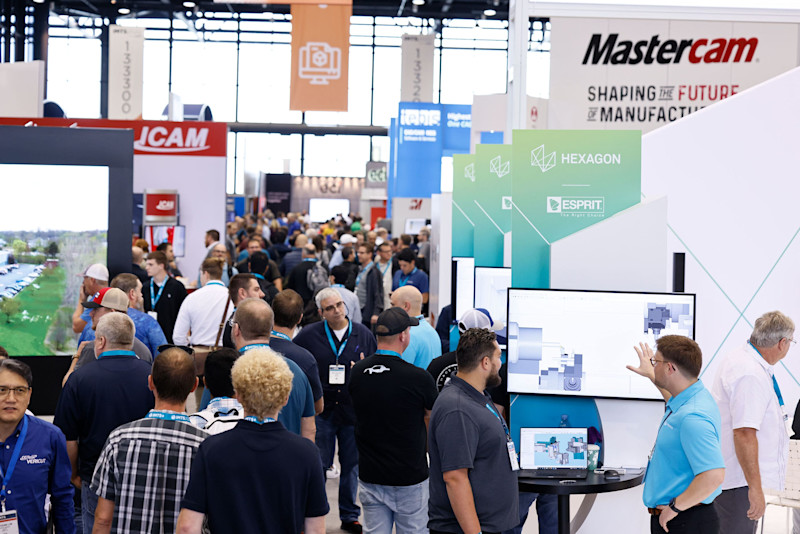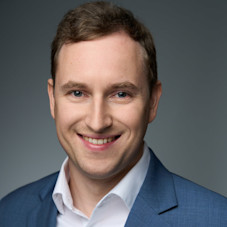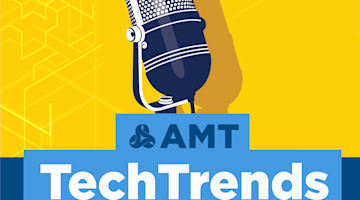Additive manufacturing (AM) has come a long way since the last IMTS in 2018. IMTS 2022 was buzzing with excitement over the newest additive manufacturing innovations — from hybrid technologies to specialty applications and new printing methods. One thing is clear: AM is empowering manufacturers to imagine new possibilities for their customers, leading to more opportunities in specialty markets.
“AM technology exists today for us to be manufacturing lot size one. It is no longer mass production. It is mass customization,” says Barbara Humpton, president and CEO for Siemens Corporation, at the IMTS+ Main Stage.
The Additive Manufacturing Pavilion at IMTS 2022 featured covering more than 100,000 sq. ft. of floor space. These companies demonstrated a comprehensive range of new AM hardware, software, and materials. Here are just a few advanced AM technology companies that piqued a lot of interest at the show.
Flexible additive/subtractive/inspection hybrid systems
offers additive, subtractive, and inspection solutions as a single OEM hybrid solution through more than ten machine tool manufacturers. This combined approach provides a system that’s more flexible and uses a smaller footprint than separate dedicated machines for high-mix, low-volume part needs. Plus, multiple hybrid systems allow for line balancing to increase production responsiveness and reduce processing bottlenecks. The integrated capability, which includes laser-based directed energy deposition (DED) and/or polymer extrusion additive processes, is best suited for finishing or repairing high-value parts.
Print with high-viscosity resins for parts with expanded functionality
solutions use a process called Digital Composite Manufacturing (DCM), which prints high viscosity composite resins with aligned reinforcing fibers. The company has taken one of the most prevalent 3D printing processes, vat photopolymerization (VP), and expanded upon the concept to make functional parts with variable thermal, electrical, and mechanical properties. Applications for parts produced with DCM range from injection mold soft tooling to high performance thermal, electrostatic discharge, and radio frequency components.
Low-heat metal bonding
has developed and offers hybrid sheet lamination (SL) equipment leveraging the company’s proprietary ultrasonic additive manufacturing (UAM) process integrated with machining capabilities. The company’s metal SL solutions use ultrasonic vibration with minimal heat to bond materials. This low-temperature process enables Fabrisonic to bond different metals that are otherwise difficult to combine using traditional methods. The technology has found notable success in electric vehicle, space, and defense applications.
Lower-cost laser printing for small companies
has introduced laser powder bed fusion (LPBF) printers at a lower price point than others, making AM accessible to smaller companies. Thanks to simpler laser technology in its smaller models, the mid-five figure price range is a fraction of traditional LPBF systems that start in the low- to mid-six figures. Xact Metal has demonstrated the importance of price and value when adopting a new AM process for the first time. Its LPBF systems are best suited for prototyping and mold/tool development.
Closed-loop printing for tight spec, soft polymer parts
is a material jetting (MJ) technology developer that offers materials, hardware, and software for its vision-controlled jetting process. Based on technology similar to household 2D inkjet printers and combined with UV light, Inkbit’s process cures individual layers before being inspected by the machine vision system. The process incorporates a closed feedback loop that compares individual layer heights to the part design and can adjust deposition in subsequent layers to better meet part specifications. Inkbit specializes in soft polymer parts for use as seals, grippers, and skin contact applications.
Fast printing for high-precision, production-grade tools
has developed a process that combines CNC machining with metal paste extrusion specifically designed for tooling insert applications. The company’s technology makes high precision production-grade tools in a faster timeframe than traditional approaches can make them today. Mantle represents a trend toward companies finely tuning their AM technology to meet the needs of specific applications.
The explosion of innovative technology at the AM Pavilion at IMTS 2022 is a sign of things to come. No doubt AM will play an important part in the interdisciplinary future of the manufacturing technology industry. As attendees and exhibitors reflect on the connections and learnings from IMTS 2022, many look forward to the additive manufacturing finale for this calendar year — Formnext held Nov. 15-18 in Frankfurt, Germany. Learn more about .
And More AM Events to Come
AMT and Gardner Business Media have collaborated with Mesago, the organizers of Formnext, and Messe Frankfurt Inc. to launch Formnext Forum Austin (Aug. 28-30, 2023), the Formnext Forum co-located at IMTS 2024, and (April 8-10, 2025) in Chicago.









